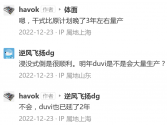Beijing was supposed to start production in end of 2022 (I thought), but looks like it will start in 2023 and fully ramp up by end of 2025. Same with Shenzhen I suppose (although that's older process, so I think they already have all the DUVi they needed). Lingang start production in end of 2023 at the earlier and fully ramp up by 2027.
Based on standard timeline expectations, I'd say they probably have at least secured enoug ASML DUVi for initial lines in Lingang and probably more than half of expecting Beijing production. I also guess that due to requirement to fully de-Americanize and to test with SMEE Arf scanner, it maybe delaying start of production at Beijing. Again, I expect all initial production lines to be using non-Chinese scanners. That's why it's important for them to fast track those orders. If developing process with SMEE Arf/Arfi scanners take longer than expected, you don't want your expansion to slow down too much.
I don't know much about it, but I think you have the right timeline. So, SMEE is likely what they use imo.
I think they have more time than that, because SMEE itself doesn't seem like the most capable company.
The only fab they absolutely require DUVi scanners are the SN1/SN2 fabs. I think they will have more than enough of 1980i/2050i/2100i for any planned expansion. If SMEE DUVi scanners require debugging into mid 2024 (I'd put that as quite plausible), they at least have Arf dry scanners that can be used to further expand 45 to 90nm production.
At this point, I'm sure that SSA600 was really not a commercially viable Arf scanner when it was first certified back in 2018. It might have been testing with SMIC/YMTC/Yandong back in 2020 to 2021, but it was still not really commercially competitive to foreign ones. So while they reported that they have 90 nm scanner in production, it's only probably to be used if foreign ones are not available.
SSA800/SSB800/SSC800's goal is to first give them dual stage lithography machine that can provide comparable performance to foreign ones. It seems like they will not mass produce it until they reach that level. The fact that they are not speeding things up tells me:
1) they believe they have enough DUVi scanners stocked up to deal with some delays
2) lithography machines are not the only machines holding back full domestic 28 nm process. Based on announcements from past couple of weeks, seem like a couple of other items for 55nm process only became available to ICRD in the past quarter.
3) they believe Arf scanner will be ready soon and it can cover most of the mature node production they do while they wait for Arfi scanner to be ready
I don't think we should give SMEE a pass here. They are clearly behind schedule. They are not the most capable in this. That's why they are not in charge of EUVs. As I said before, Huawei blew it by not getting involved here from the beginning.
I read Havok's statements again. I think the big take away is that the ICRD production line is already set up and ready to verify and complete debugging over the next few months. And if all goes well, Arf dry scanners will be mass produced. Once that's up and running, that's enough to cover most of the 45 nm and higher node that China is bringing online over the next 3 years. And they will fully develop SSB/C-800 which will give them full product coverage from 350 to 45 nm production. I'm assuming that they'd want to use Arfi scanner for 40nm prorcess.
I think we should be careful about make assumptions on when DUVi mass production will begin. Maybe they produce a couple of more to help Huawei/ICRD/SMIC with developing different process. But based on what I can see, they are very serious about making sure that what they develop is something that can produce chips at commercially competitive level. I think the mid 2023 comment was very optimistic. Havok himself seemed very careful about not making any assumptions about when it will be ready. He seems quite certain that Arf dry will be ready soon. I think we should not be disappointed in Arfi scanner doesn't get mass produced until 2024. Because when it does get mass produced, it will be with good enough to almost immediately go into producing chips.
I saw a prominent weibo account saying that most of the bids now are using 50 to 60% domestic tools, only major missing one is lithography machine. Once ICRD verifies the 55nm process early next year, they won't even need any foreign tools for mature nodes. I assume ICRD will then follow with trials for 40 and then 28 processes with Arfi scanner. Once they get 2nd gen Arfi scanner developed, they can do 14/7 nm process. This will probably take 3 years to fully accomplish (so maybe 2025 is when they will have fully domestic 5/7 nm process using SMEE DUVi scanners.
Imo, American SME companies have underestimated how much sales they will loose in China next year. I think they expected to still be able to capture a portion of the mature node processes. But who is going to buy them over Chinese ones if they are more expensive, easily sanctioned and might not be able to provide after service support. And that's on top of potentially being force to open their books for inspection by US gov't. Who in their right mind would want to buy that?


